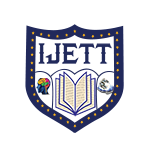A Coiling-Up Metamaterial for Acoustic Band-Stop Filtering
A Coiling-Up Metamaterial for Acoustic Band-Stop Filtering |
||
 |
 |
|
| © 2025 by IJETT Journal | ||
| Volume-73 Issue-5 |
||
| Year of Publication : 2025 | ||
| Author : Seonggeon Bae | ||
| DOI : 10.14445/22315381/IJETT-V73I5P125 | ||
How to Cite?
Seonggeon Bae , "A Coiling-Up Metamaterial for Acoustic Band-Stop Filtering," International Journal of Engineering Trends and Technology, vol. 73, no. 5, pp.297-303, 2025. Crossref, https://doi.org/10.14445/22315381/IJETT-V73I5P125
Abstract
In this study uses the efficient refractive index and efficient impedance to analyze two coiling-up structures with differing sound pressure. These structures have a high effective refractive index and effective impedance. To calculate the resonance frequencies, the coiling structures were modelled as a simple medium7, 8, 13. Our study calculated the sound pressure using the Fabry-Perot resonance theory. The application of this calculation applies to the different features of both open and closed cavity structures. In other words, it acts as a band-stop filter to reduce specified frequencies. We designed a metamaterial as an acoustic filter to attenuate or reject the desired frequency components using two types of cavities. Sound pressure typically appears as a periodic feature in the open cavity structure. In the closed cavity structure, the sound pressure produces attenuation due to the effects of the reflections on the slab. At the end of the transmission, the characteristics of the FP are maintained and the specified frequency components exhibit attenuation. These features can be applied to acoustic focusing, cloaking and filtering.
Keywords
Coiling-up, Sound pressure, Open and closed cavity, Fabry-Perot resonance, Metamaterial.
References
[1] Lucian Zigoneanu, Bogdan-Ioan Popa, and Steven A. Cummer, “Three-Dimensional Broadband Omnidirectional Acoustic Ground Cloak,” Nature Materials, vol. 13, no. 4, pp. 352-355, 2014.
[CrossRef] [Google Scholar] [Publisher Link]
[2] Kyungjun Song et al., “Sound Pressure Level Gain in an Acoustic Metamaterial Cavity,” Scientific Reports, vol. 4, no. 1, 2014.
[CrossRef] [Google Scholar] [Publisher Link]
[3] Xiaoshi Su, and N. Andrew Norris, “Focusing, Refraction, and Asymmetric Transmission of Elastic Waves in Solid Metamaterials with Aligned Parallel Gaps,” Journal of the Acoustical Society of America, vol. 139, no. 6, pp. 3386-3394, 2016.
[CrossRef] [Google Scholar] [Publisher Link]
[4] Andrea Colombi, Philippe Roux, and Matthieu Rupin, “Sub-Wavelength Energy Trapping of Elastic Waves in a Metamaterial,” Journal of the Acoustical Society of America, vol. 136, no. 2, pp. 192-198, 2014.
[CrossRef] [Google Scholar] [Publisher Link]
[5] Bogdan-Ioan Popa, and A. Steven Cummer, “Non-Reciprocal and Highly Nonlinear Active Acoustic Metamaterials,” Nature Communications, vol. 5, no. 1, pp. 1-5, 2014.
[CrossRef] [Google Scholar] [Publisher Link]
[6] Juliette Pierre, Benjamin Dollet, and Valentin Leroy, “Resonant Acoustic Propagation and Negative Density in Liquid Foams,” Physical Review Letters, vol. 112, no. 14, 2014.
[CrossRef] [Google Scholar] [Publisher Link]
[7] Kyungjun Song et al., “Emission Enhancement of Sound Emitters using an Acoustic Metamaterial Cavity,” Scientific Reports, vol. 4, no. 1, pp. 1-6, 2014.
[CrossRef] [Google Scholar] [Publisher Link]
[8] Zixian Liang et al., “Space-Coiling Metamaterials with Double Negativity and Conical Dispersion,” Scientific Reports, vol. 3, no. 1, pp. 1-6, 2013.
[CrossRef] [Google Scholar] [Publisher Link]
[9] Romain Fleury, and Andrea Alù, “Extraordinary Sound Transmission through Density-Near-Zero Ultranarrow Channels,” Physical Review Letters, vol. 111, no. 5, 2013.
[CrossRef] [Google Scholar] [Publisher Link]
[10] Yong Li et al., “Unidirectional Acoustic Transmission Through a Prism with Near-Zero Refractive Index,” Applied Physics Letters, vol. 103, no. 5, 2013.
[CrossRef] [Google Scholar] [Publisher Link]
[11] Jie Zhu et al., “Acoustic Rainbow Trapping,” Scientific Reports, vol. 3, no. 1, pp. 1-6, 2013.
[CrossRef] [Google Scholar] [Publisher Link]

